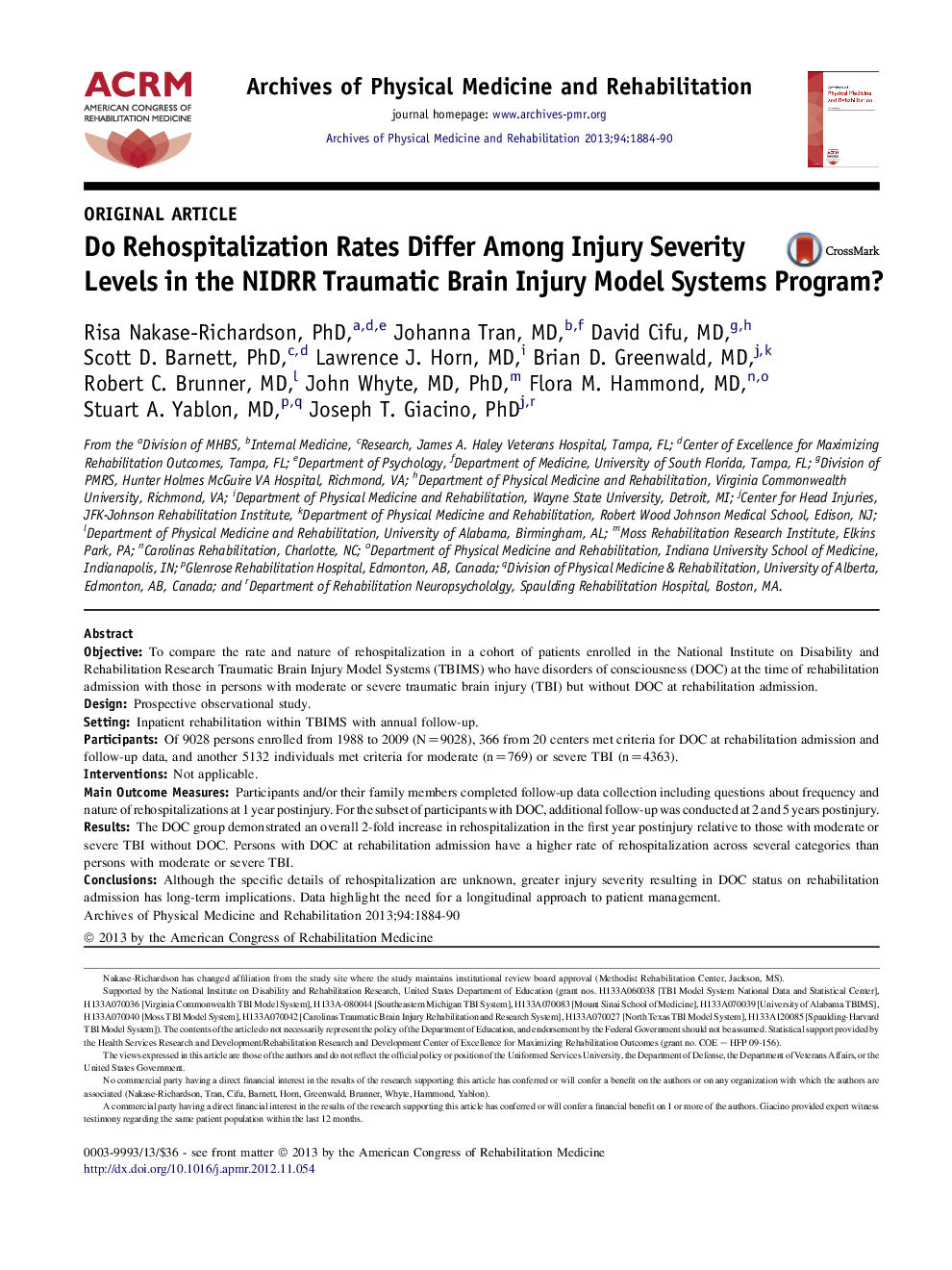| Article ID | Journal | Published Year | Pages | File Type |
|---|---|---|---|---|
| 3448614 | Archives of Physical Medicine and Rehabilitation | 2013 | 7 Pages |
ObjectiveTo compare the rate and nature of rehospitalization in a cohort of patients enrolled in the National Institute on Disability and Rehabilitation Research Traumatic Brain Injury Model Systems (TBIMS) who have disorders of consciousness (DOC) at the time of rehabilitation admission with those in persons with moderate or severe traumatic brain injury (TBI) but without DOC at rehabilitation admission.DesignProspective observational study.SettingInpatient rehabilitation within TBIMS with annual follow-up.ParticipantsOf 9028 persons enrolled from 1988 to 2009 (N=9028), 366 from 20 centers met criteria for DOC at rehabilitation admission and follow-up data, and another 5132 individuals met criteria for moderate (n=769) or severe TBI (n=4363).InterventionsNot applicable.Main Outcome MeasuresParticipants and/or their family members completed follow-up data collection including questions about frequency and nature of rehospitalizations at 1 year postinjury. For the subset of participants with DOC, additional follow-up was conducted at 2 and 5 years postinjury.ResultsThe DOC group demonstrated an overall 2-fold increase in rehospitalization in the first year postinjury relative to those with moderate or severe TBI without DOC. Persons with DOC at rehabilitation admission have a higher rate of rehospitalization across several categories than persons with moderate or severe TBI.ConclusionsAlthough the specific details of rehospitalization are unknown, greater injury severity resulting in DOC status on rehabilitation admission has long-term implications. Data highlight the need for a longitudinal approach to patient management.
